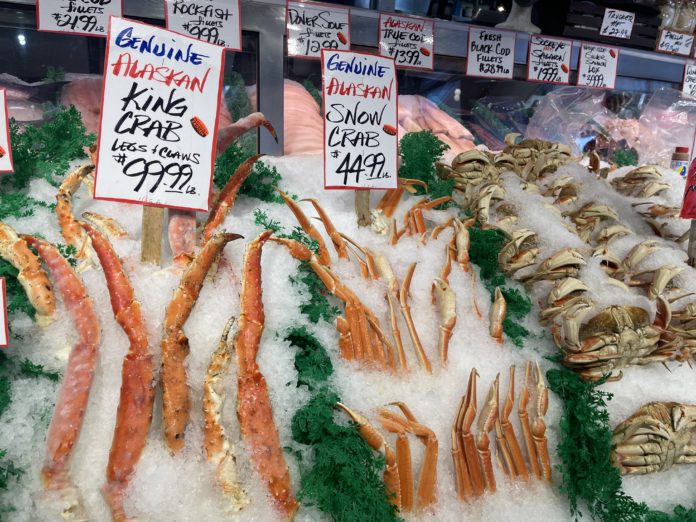
Two decades into the decline of Bristol Bay red king crab, with stocks now too low for a commercial fishery, the fight continues at the North Pacific Fishery Management Council over what protections to take for the crab in danger and how soon to do it.
Alaska Bering Sea Crabbers had hoped that federal fisheries managers might put restrictions on groundfish fishing in the Red King Crab Savings Area, as well as other measures, during the NPFMC’s April meeting in Anchorage.
Instead the council voted to have staff prepare an expanded discussion paper for its October meeting that includes analysis of the impacts on annual or seasonal closures to pelagic trawl, groundfish, pot and longline gear in the BBRKA, including impacts on target catch, fishing timing relative to crab mating and molting, crab avoidance and other prohibited species catch and non-target species.
The motion, which passed unanimously, called for a description of research that would inform development of more flexible and effective spatial management measures, gear modifications to reduce impacts on the BBRKA stock, or to evaluate unobserved mortality in the trawl sector.
Jamie Goen, executive director of Alaska Bering Sea Crabbers, said it was a step in the right direction, but expressed concern that the motion leaves out some important protections for crab and that this step is not happening fast enough to help rebuild Alaska’s red king crab stocks in the Bering Sea.
“When the trend was first starting, the council’s own scientists and managers in 2012 provided detailed recommendations for important actions that could help the stock, including additional protections for females, spawning grounds, and molting, soft-shell crab,” Goen said. “The council has not acted on these recommendations in the 10 years since that time while the stock has continued on a downward trend. It is simply unacceptable for the council and state, with a management responsibility to keep this stock sustainable, to allow this to happen at the cost of now closing down the directed crab fishery, and harming Alaska’s coastal communities and fishing families that rely on hundreds of millions of dollars from the crab fishery for income and tax revenues. It has ripple effects to the municipalities, local schools, and support businesses from this closure.”
Goen also noted that the council has asked for all fishing industry sectors who interact with crab to describe at the October council meeting voluntary measures being taken to avoid the crab.
But the expanded discussion paper does not appear to address other important issues, Goen said. These include protections to help optimize recruitment events, a crucial piece of helping this stock recover, she said.
“Nor does the expanded discussion paper due in October appear to address areas that could be having big impacts on crab, unobserved fishing mortality, in a timely fashion,” Goen said. “Unobserved fishing mortality in this case is crab that are killed after coming in contact with fishing gear, like footrope or chains on midwater trawl gear as it is dragging the bottom. These are the crabs killed and left on the ocean floor that never make it into the codend to come up on deck and have an opportunity to be observed and counted.”
Goen noted that the council’s discussion paper at the April meeting pointed out that Pollock midwater trawl gear is on the bottom contacting the seafloor on average 40% of the time by catcher boats and 85% of the time by factory trawlers, brining into question the term “midwater.”
Participants in the Bering Sea Pollock fishery did not argue the fat that midwater trawl nets are often on the bottom, but contend there is no evidence that they are harming the crab.
Alaska Bering Sea Crabbers’ Cory Lescher told the council during public testimony that once the molting red king crab are on the bottom, they don’t move while waiting 74 days for their new shell to get to 90% hardness.
In that situation they are very vulnerable to trawl fishing nets. In response to questions posed at the meeting of the council’s Advisory Panel, Lescher noted that some 30,000 square miles of trawl fishing gear has bottom contact and said the magnitude of that that trawl gear could do to crab stocks in January and February over the past three years should be looked into.
“Time is of the essence,” Goen said. “We don’t have any time to wait while we do more studies on this stock or it may be too late for Bristol Bay red king crab.”





